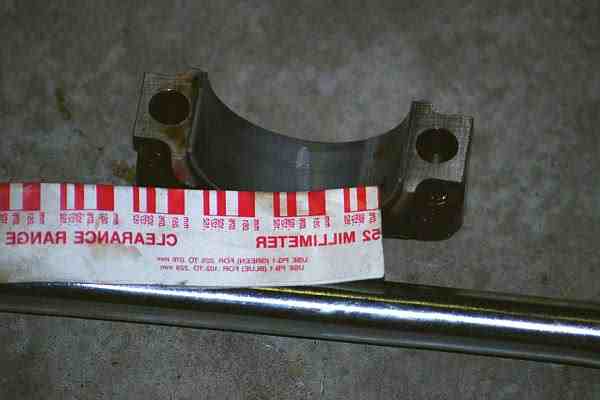
|
Adam asked about measuring the rod bearings when
I mentioned before that I was replacing them. It seemed like a good idea
even though I had no reason to suspect problems. At $0.95 per strip plastigage
is a steal so why not. You can see (barely) one of the measurements here
on an old bearing. The gauge slot that matches is 0.076mm. My bearings
came out as 0.051, 0.051, 0.051, 0.063, 0.051, 0.063, 0.063, 0.063 for
cylinders 1-8 respectively. The new bearing (I measured one for curiousity's
sake) came out at 0.051. The specs are 0.02 to 0.07 for new bearings
and 0.1mm as the wear limit. All in all I was happy to see the originals
were in good shape and for the small cost and effort (as Mark predicted)
it seemed good to replace them. |









